“We were running around and yelling, and then Dad yelled at us,” she told 9news.com.au.
“He said, ‘For God’s sake, there’s nothing left’.”
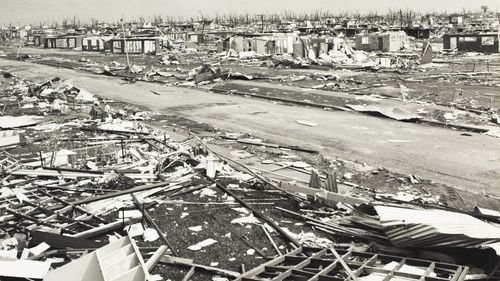
There was indeed nothing left for tens of thousands of Darwin residents.
That Christmas Day the kids would spend in the warzone of wreckage and devastation that Cyclone Tracy had left behind.
Harmsen said the beginning of the cyclone felt much like any other tropical storm.
But when her mother made her and her siblings wrap themselves up in their bedspreads and they fled the house, she knew something about it was different.
“Our neighbour’s tree had fallen on our roof, and the roof was getting torn off,” she said.
Battling heavy winds, the family raced across the road to a house belonging to a naval officer, whose wife let them in.
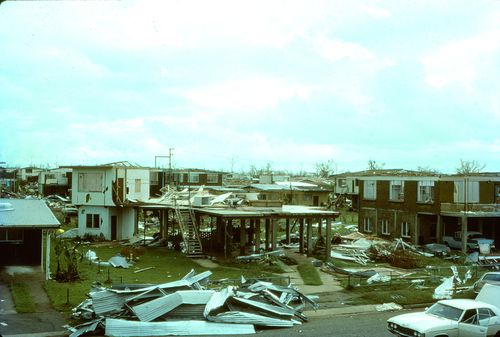
The children were put in the bathtub, with their bedspreads still over them to protect them from any spraying glass.
“I remember just thinking it was so hot,” Harmsen said.
“And all the adults were sitting around drinking grog.”
Cyclone Tracy tore a path of destruction through Darwin that would take years to repair.
Gusts reached 217km/h before measuring instruments failed, and 66 people were killed as buildings blew apart all over the city.
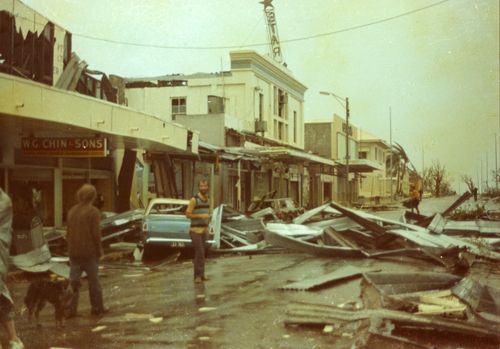
“We laid there all night just listening to this roar,” Hamsen said.
“It’s hard to describe but it’s unforgettable.
“And we could feel the pressure, even indoors – the pressure was pushing at the house.”
At one point during the night, her father left the house after the gathered group heard a woman screaming outside.
Harmsen said the woman was clinging to her toilet bowl as the rest of her house was shredded.
Her father climbed the staircase to help her but was blown off, injuring his leg. She said he came back “covered in blood”, but he managed to rescue the woman and get her to safety before returning to his family.
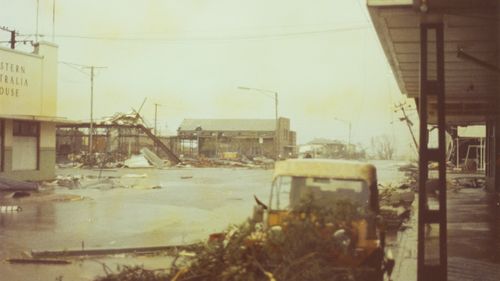
Just as her father had said, Harmsen soon saw there was “nothing left” of the city she’d known.
Living in the northern suburbs, they’d copped the full force of Tracy’s fury.
Outside, she saw that a neighbour’s house was gone – entirely.
“I remember staring at the floorboards, thinking ‘how does a house just go?'” she said.
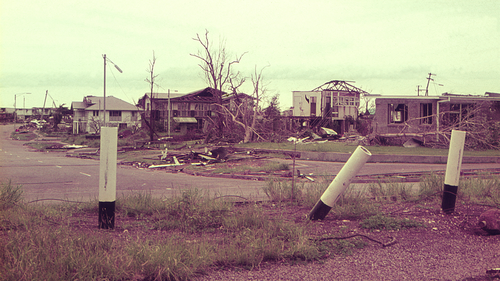
Her own home had lost its roof but the walls were intact – if somewhat blown out.
As well as the 66 people killed in the storm, 145 were seriously injured and hundreds more suffered minor injuries.
The National Museum cites the total cost of the damage at over $800 million, the equivalent of more than $7.5 billion today.
On the third day after the storm, Harmsen, her mum, and her siblings joined the evacuees being flown out of the ravaged city.
On the way to the airport, the eight-year-old girl saw the measure of the destruction.
“The whole bus was silent,” she said.
“There were no houses left on the whole drive to the airport.”
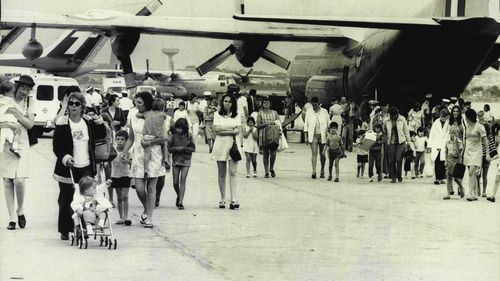
The family flew to Sydney Airport, where they landed with nothing but the clothes on their backs.
But they were greeted with a mountain of donations, including clothes and even money.
The family spent six months with a relative at Goulburn while Harmsen’s father, a builder, repaired the home in Darwin.
Harmsen said she had been through three more cyclones since – including one in high school – but none of them compared to Tracy.
“They didn’t feel the same, they didn’t sound the same,” she said.
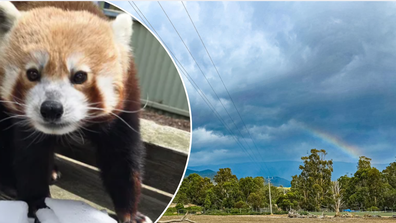
‘Intense few days’ as keepers care for zoo animals near fire zone
And, she said, Tracy continued to affect people months after the storm itself – especially marriages.
“Mum and Dad’s marriage didn’t survive it,” she said.
“Lots of my friends’ parents were breaking up – and this was the ’70s, divorce wasn’t done.
“I remember having a conversation with Mum about it. Little did I know it was on the cards for them.
“It’s the stress and the strain of rebuilding, the months apart.”
Fifty years on, Cyclone Tracy remains the deadliest storm ever to strike Australia.







